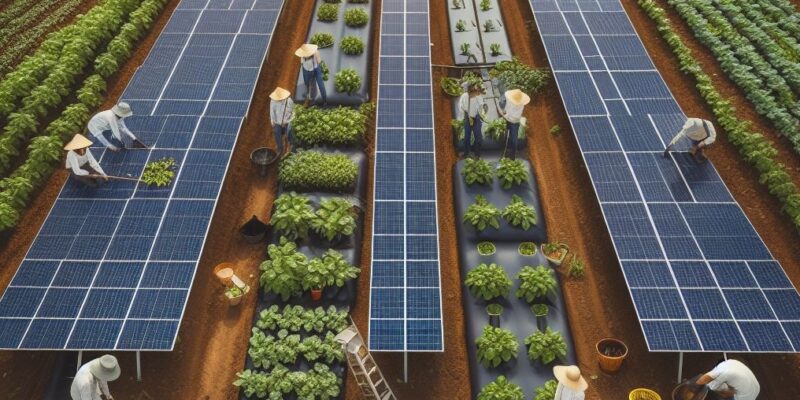In the pursuit of sustainable agriculture and renewable energy, innovators are continually seeking ways to maximize land use efficiency while minimizing environmental impact. One such promising solution that has garnered attention in recent years is agrovoltaics – an ingenious integration of agriculture and solar energy production
At its core, agrovoltaics, or agrivoltaics, involves the co-location of agriculture and solar photovoltaic (PV) panels on the same plot of land. Rather than viewing land as dedicated solely to farming or solar energy production, agrovoltaics harnesses the synergy between these two activities, creating a harmonious relationship that offers a host of benefits.
The Benefits of Agrovoltaics
- Land Use Efficiency:
By utilizing the same parcel of land for both agriculture and solar energy generation, agrovoltaics effectively doubles the land’s productivity.
This is particularly advantageous in areas where land availability is limited or where competing land use demands exist.
- Climate Resilience:
The shading provided by solar panels in agrovoltaic systems helps moderate temperature extremes, creating a microclimate that can benefit certain crops, especially in regions prone to heat stress.
Additionally, solar panels can reduce water evaporation from the soil, helping conserve water in arid or semi-arid climates.
- Diversification and Income Generation:
Agrovoltaics allow farmers to diversify their income streams by simultaneously producing crops and generating solar energy.
This can help buffer against market fluctuations and provide a steady source of revenue, enhancing the economic viability of agricultural operations.
- Environmental Benefits:
By offsetting fossil fuel-based energy generation with renewable solar power, agrovoltaics contribute to reducing greenhouse gas emissions and combatting climate change.
The integration of vegetation in agrovoltaic systems promotes biodiversity and can enhance soil health through increased organic matter and microbial activity.
Agrovoltaics represents a powerful example of how innovation and ingenuity can address pressing challenges at the intersection of agriculture and renewable energy. By harnessing the complementary nature of farming and solar energy production, we have the opportunity to cultivate a more sustainable, resilient, and productive agricultural landscape while advancing our transition to a clean energy future. As we embrace the potential of agrovoltaics, we sow the seeds for a brighter tomorrow, rooted in harmony with nature and powered by the sun.

